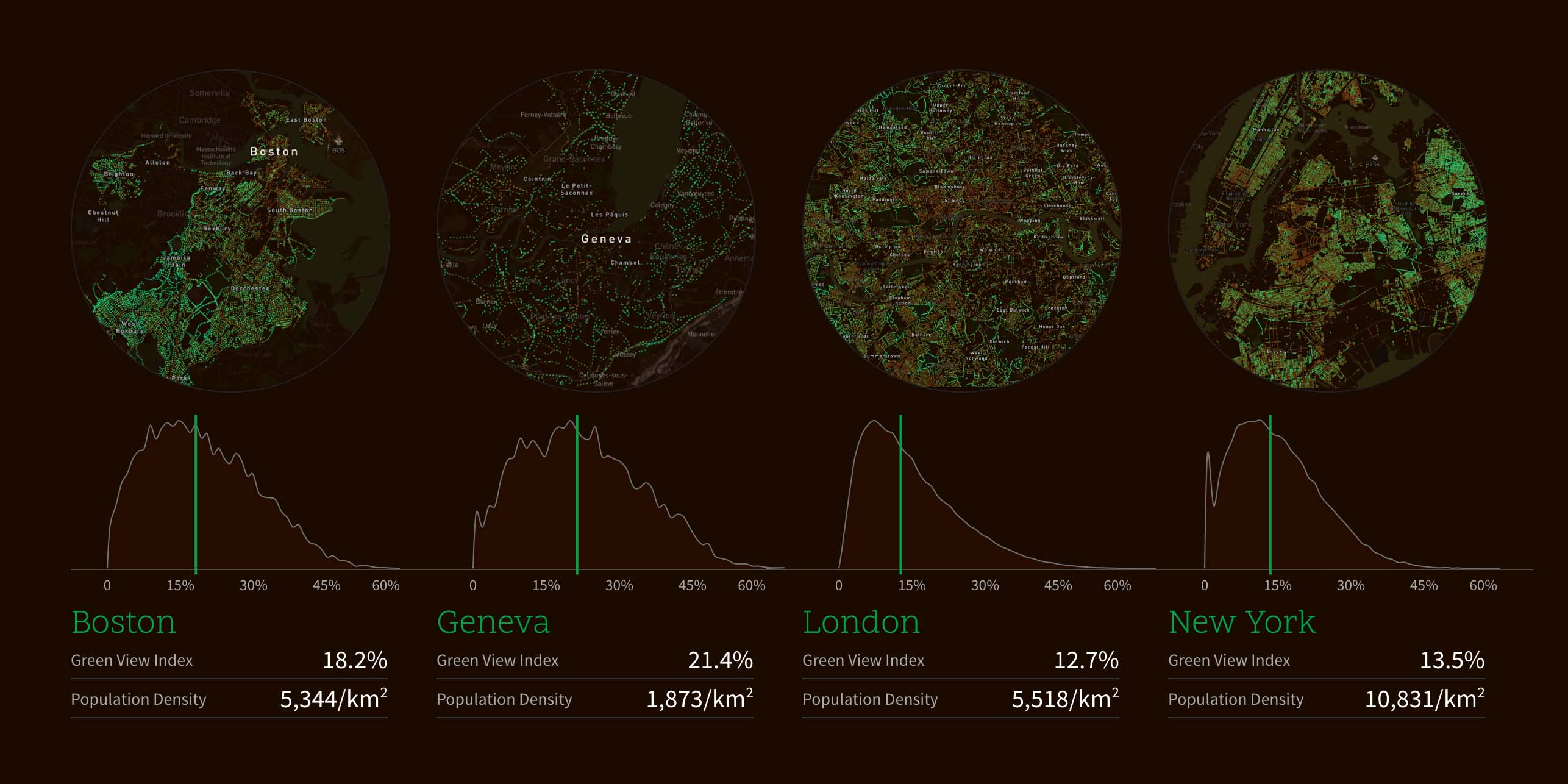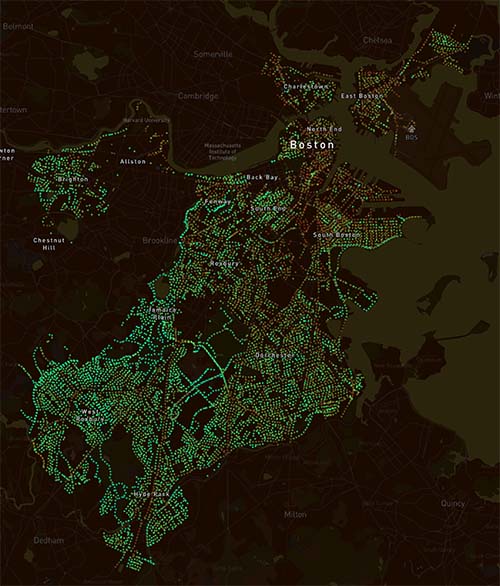Recommended

If a city is a living body, then the plants that green the environment must be its lungs. And every body needs lungs.
Treepedia, a new project by the MIT Senseable City Lab, is putting numbers on that, measuring the green canopy of cities. Researchers at MIT and the World Economic Forum (WEF) are using Google Street View panoramas to calculate a Green View Index. Launched in December, the team now offers 17 world cities—and more are to come.
Who is the greenest of them all? Singapore ranks first with 29.3 per cent of its area covered by green. On the opposite end, Paris clocks in with only 8.8 percent. Boston comes in with a respectable 18.2 percent.
The goal is to focus attention on the value of plants in urban areas and encourage residents and governments to protect and increase each city’s tree cover. On each map, you can click down to get a street view of a particular location and its canopy percentage.
An Atlantic City Lab article points to a way to use the maps as tools for community action. “Anyone campaigning to increase the tree canopy in New York, for example, can see instantly that, while tree cover is generally decent across the city, the worst served districts are Midtown Manhattan, Hunts Point in the Bronx, southwestern parts Brooklyn, and along the Newtown Creek between Brooklyn and Queens.”

Trees are valuable in cities because they provide shade and moderate temperatures, improve air quality, and encourage a sense of well being among residents.
Cities have good reasons to increase tree canopies, according to Treepedia:
"Increasing a city’s tree canopy contributes to lowering urban temperatures by blocking shortwave radiation and increasing water evaporation. Creating more comfortable microclimates, trees also mitigate air pollution caused by everyday urban activities. Their absorptive root systems also help avoid floods during severe rains and storm surges. So overall, trees are pretty awesome."
Learn more about the MIT Senseable City Lab.








Comments
Marcia Hettinger
Tue, 04/18/2017 12:22pm
I live in a historic district(Lutherville) and we are continually fighting with Electric co. (BGE) to save our trees. We would love to track our canopy. What can a small historic district do to help? Takoma Park in Maryland has labeled all their trees and gotten laws passed....you remove a tree you must replace with a certain caliper tree and they provide the list of replacements. Please let us know how we can help.
Anne Williams
Fri, 03/03/2017 7:08am
This needs to be done for smaller cities, and it needs to be tracked from year to year.
Giecewicz
Fri, 07/21/2017 5:17am
What about Vienna in Austria with 49%?